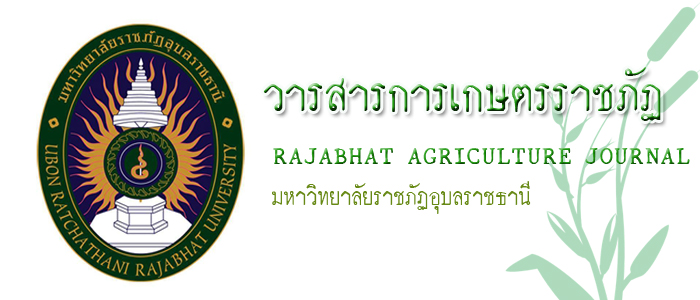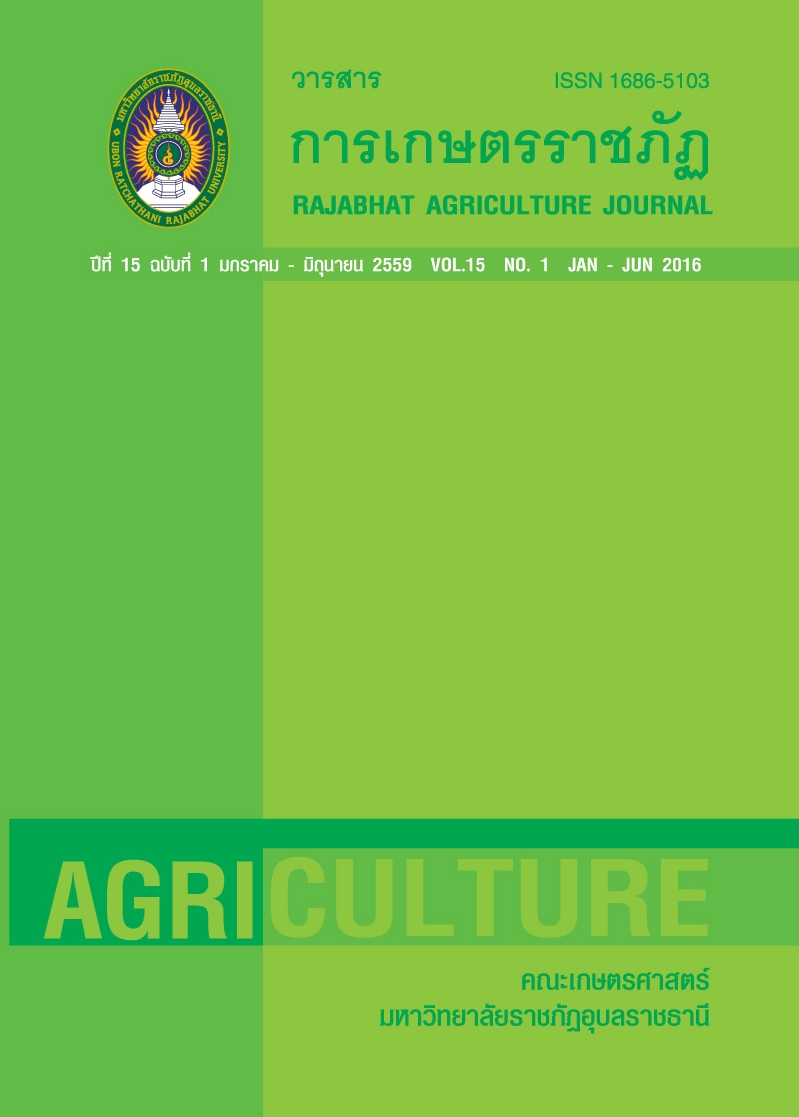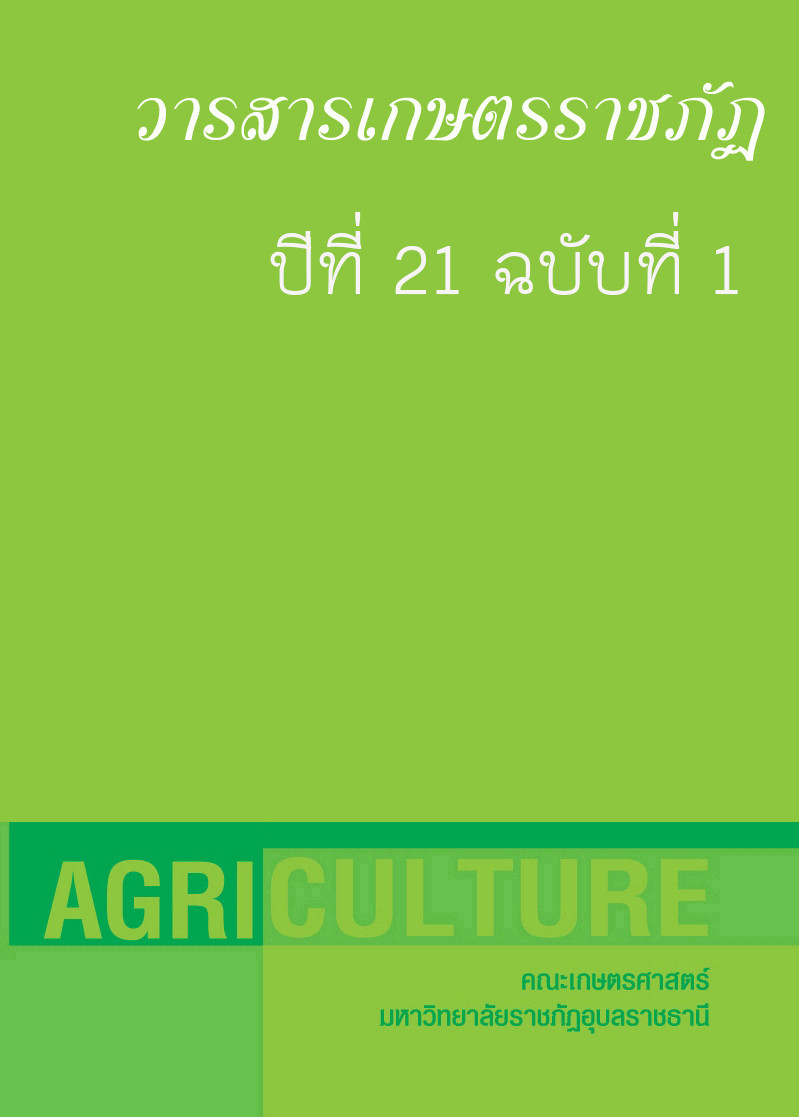Biological Control of Rhizoctonia Damping Off of Chinese Cabbage using a Bioformulation Containing Streptomyces sp. MOST-1
Biological Control of Rhizoctonia Damping Off of Chinese Cabbage using a Bioformulation Containing Streptomyces sp. MOST-1
Biological Control of Rhizoctonia Damping Off of Chinese Cabbage using a Bioformulation Containing Streptomyces sp. MOST-1
--------------------------------------------
โดย Sirirat Siripornvisal1 and Teerayuth Suddee1
ประเภท : บทความวิจัย
ปีที่ตีพิมพ์ : วารสารเกษตรราชภัฏ ปีที่ 15 ฉบับที่ 1
ผู้เข้าชม 0
วันที่ปรับปรุงข้อมูล : 2016-07-04 12:02:59
ดาวน์โหลด
บทคัดย่อ
-
Abstract
In the present study, a talc based biological control product containing an antagonistic Streptomyces strain MOST-1 was formulated and tested for its stability and efficacy against soil borne diseases of Brassica chinensis. Stability of the formulation was tested over a 9 month period, at 4 C and at room temperature (25-35 C). It was found that the formulation showed high stability since it retained 100 % survivability of the antagonist after 6 months storage and up to 80 % after 9 months. The formulation was then experimentally applied to control Rhizoctonia damping off diseases of Brassica chinensis under environmental controlled chamber condition. The results revealed that the formulation effectively control the diseases since it provided up to 100 % suppression when it was applied at the rate of 10 g per 1 kg of potting material. In addition, it was found that application of the formulation led to the promotion of plant growth. These results indicated appropriateness talc as a bulk carrier for bioformulation of Streptomyces sp. MOST-1 for biocontrol use. The potential of the bioformulation as an effective product for biocontrol of Rhizoctonia damping off diseases of Chinese cabbage was also confirmed in this study. However, in order to declare it commercial suitable, larger scale or field application should be further evaluated


